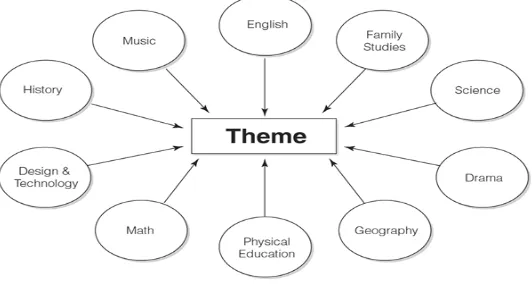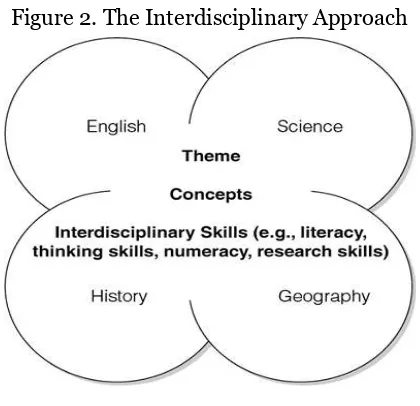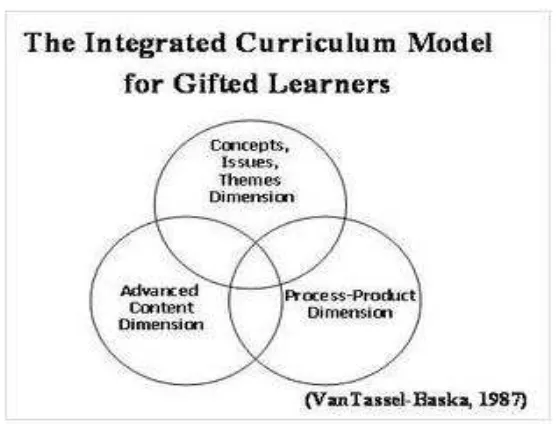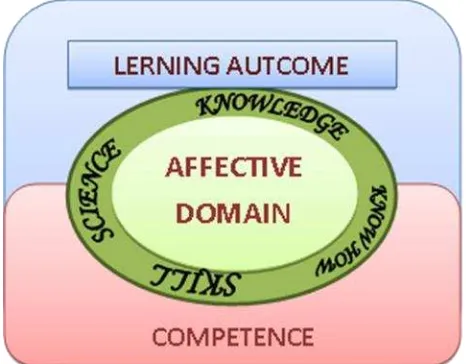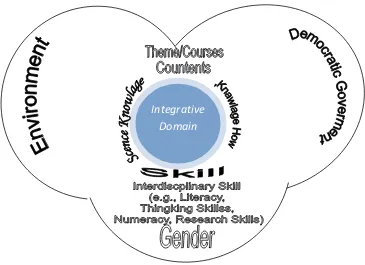PROCEEDINGS OF THE INTERNATIONAL CONFERENCE ON UNIVERSITY-COMMUNITY ENGAGEMENT
Abstract: This globalization era, Islamic Religious Universities (PTKI) are required to have the ability to perform continuous improvement, quality, competitive, productive, justice, peace, equality, and environmental protection. However PTKI cannot be implemented to the maximum, because of operational problems holistically governance colleges, from various aspects. Issues to be disclosed for that is discussed in this paper; "How is the integration patterns of democratic governance, gender, and the environment into the curriculum PTKI in Indonesia?" The methods used to solve the problem in this research is the use of philosophical approaches, psychological, and sociological, with a kind of library research. The process of analyzing the data and discussion priority objective interpretations, namely in the form of an in-depth study of the problem. The research data were described by a content analysis (content analysis), descriptive analysis (descriptive analysis) inter-text analysis (analysis or any kind of other analyzes that are relevant to the focus of his research. The paper presents several conclusions. First, the curriculum structure turned out to present a varied and require standard competency-integrative holistic graduates. Second, the pattern of implementation of standards of competence and learning processes need to be done with the pattern of integrative learning domain.
24 PROCEEDINGS OF THE INTERNATIONAL CONFERENCE ON UNIVERSITY-COMMUNITY ENGAGEMENT
SURABAYA –INDONESIA,2-5AUGUST 2016
Introduction
This globalization era, Islamic Religious Universities (PTKI) are required to have the ability to perform continuous improvement, quality, competitive, competitive, productive, justice, peace, equality, and environmental protection. However PTKI can not be implemented to the maximum, because of operational problems holistically penatatakeloaan colleges, from various aspects. One fundamental aspect is PTKI tend not found any integration of the concept of democratic governance, gender and the environment into the curriculum to the fullest. One fundamental aspect is PTKI tend not found any integration of the concept of democratic governance, gender and the environment into the curriculum to the fullest. The concept of democratic governance is integrated into the curriculum is important because the concept is likely to lead learners have a winning personality holistically, physically and spiritually. Besides the concept in accordance with the ideal of education in Islam. The concept of gender can play an important role tend to minimize gender inequity in higher education institutions. As for the environment is one of the most enduring aspect of human thought.
The concept of democratic governance originated of the concept of democracy and governance. Dahl, R. (1998) explained that democracy has these characteristics and advantages: prevention of despotic rule, guarantee of basic rights, universal freedom, control of agenda, moral independence, cultivation of humanity, protection of basic personal interests, political equality, and pursuit of peace and prosperity. The theory of “governance” emerged in the 1970s. The term “governance” has wider connotations than
primarily “management”. Shabbir Cheema (2005) analyze democratic governance is the range of processes through which a society reaches consensus on and implements regulations, human rights, laws, policies and social structures – in pursuit of justice, welfare and environmental protection. Policies and laws are carried out by many institutions: the legislature, judiciary, executive branch, political parties, private sector and a variety of civil society. In this sense democratic governance brings to the fore the question of how a society organizes itself to ensure equality (of opportunity) and equity (social and economic justice) for all citizens.
PROCEEDINGS OF THE INTERNATIONAL CONFERENCE ON UNIVERSITY-COMMUNITY ENGAGEMENT
SURABAYA –INDONESIA,2-5AUGUST 2016 25
and recom-mendation: gender equality policies in education need to take account of al class, ethnic, cultural and other status differences within gender groups (Angelos, 2009: 13). Environment has various meanings. The environment includes all natural and cultural elements. In this paper called the environmental context of the educational environment. Joy A. Palmer (1998: 7) present environmental education is the process of recognising values and clarifying concepts in order to develop skills and attitudes necessary to understand and appreciate the inter-relatedness among man, his culture, and his biophyisical surroundings. Environmental education also entails practice in decision-making and self formulation of code of behavior about issues concerning-quality.
The methods used to solve the problem in this research is the use of philosophical approaches, psychological, and sociological, with a kind of library research. The process of analyzing the data and discussion priority objective interpretations, namely in the form of an in-depth study of the problem. The research data were described by a content analysis (content analysis), descriptive analysis (descriptive analysis) inter-text analysis (analysis or any kind of other analyzes that are relevant to the focus of his research.
Integration Curriculum
26 PROCEEDINGS OF THE INTERNATIONAL CONFERENCE ON UNIVERSITY-COMMUNITY ENGAGEMENT
SURABAYA –INDONESIA,2-5AUGUST 2016
In recent times curriculum integration has assumed an inclusive interpretation, which extends beyond a combination of disciplines. Thus included in this interpretation are the Integration of across-the-domain skills such as thinking, reasoning and problem-solving capabilities (for example, Bereiter, 1986;Ackerman& Perkins, 1989), the teaching of learning strategies, and the addition of topics and subjects in the curriculum, which have not been structurally recognized es unique disciplines, for example, AIDS, drug, nutrition, and career education (the "non-disciplinary fields"). Thus unplanned forms of integration, occurring most simply at the level of paper. Integration is the unification of all subjects and experiences. The topic of democratic governance, gender, and environment (DGGE) will be described one by one as follows.
Democratic Governance
Governance is less focused on state institution, and more focused on the process and interactions that tie the state to civil society. Policy actors have responded to the challenge of governance in ways that are constrained by the image of representative democracy and a faith in policy expertise. Governance is defined by UNDP as “the exercise of economic, political and
administrative authority to manage a country’s affairs at all levels. It
comprises the mechanisms, processes and institutions through which citizens and groups articulate their interests, exercise their legal rights, meet their obligations and mediate their differences.
Democratic governance OSCE writed followed.
Democratic governance is the bedrock of the OSCE’s system of values and standards. It is a system of government where institutions function according to democratic processes and nor is necessary to is necessary toms, both internally and in their interaction with other institutions. Democracy is directly linked to the concept of governance. In fact, it is governance that has to meet
PROCEEDINGS OF THE INTERNATIONAL CONFERENCE ON UNIVERSITY-COMMUNITY ENGAGEMENT
SURABAYA –INDONESIA,2-5AUGUST 2016 27
elections, and therefore enforceable accountability, is a cornerstone of democratic governance (http://www.osce.org/odihr/demgov).
Democratic governance is one of the keys to development human dignity, social justice, quality, competitive, productive, justice, peace, equality, and environmental protection. Carl Michiels (2006: 4) write good governance or democratic governance is, in effect, a concept, or rather a practice, the implementation of which is fundamental in allowing countries receiving international aid to take control of their political, economic and social development effectively. Further Carl Michiels outlines will also ensure that the various support and assistance programmes from which they benefit from partner countries and international organisations operate as efficiently as possible. James G. March and Johan P.Olsen (1995) democratic governance is how political institution creates and sustain democratic solidarty identities, capabilities, accounts and adaptiveness.
Gender
Gender education needs to be a core element of institutional programs and teachers need to be educated on how to teach gender issues. In this issues focus on define gender equality, gender identities, and culture gender. NESSE (2009: 13) defined gender is a socially constructed and intersectional identity: it always intersects with social class, ethnicity, religion, culture, disability, sexuality, age, and care status (i.e. whether one is a career or not). Policy implications relevant to gender equality policies in education as need to take account of social class, ethnic, cultural and other status differences within gender groups.
28 PROCEEDINGS OF THE INTERNATIONAL CONFERENCE ON UNIVERSITY-COMMUNITY ENGAGEMENT
SURABAYA –INDONESIA,2-5AUGUST 2016
biologically predetermined but are time-specific and changeable. Followed be related with theory of gender equality and inequality.
Gender equality is achieved when women and men enjoy the same rights and opportunities across all sectors of society, including economic participation and decision-making, and when the different behaviours, aspirations and needs of women and men are equally valued and favoured
(http://www.genderequality .ie/en/ ge/ pages/whatisge). Theory of gender
inequality from Bacdayan (1977), Rosaldo and Lamphere (1974), and Sacks (1974) as quoted by Judith Buber Agasi (1986: 1) explored this theory of gender inequality is usually applied to industrialized societies alone; a generalized version of it has been applied by some anthropologists to preliterate societies. These anthropologists assert that the more work activities are carried out by both genders indiscriminately, the higher the status of women; the more rigid the segregation of women and men during work activities, the lower the status of women. The idea behind this theory is quite general; there are no separate but equal functions or roles (Bacdayan 1977; Rosaldo and Lamphere 1974; Sacks 1974). Robert Stoller, a psychologist who worked with individuals born with ambiguous genitalia, was the first to point out a distinction between sex and gender. He posited four concepts: sex, gender, gender identity and gender role (Stoller 1964,
1968). Although the term ‘gender role’ soon faded from view in feminist
circles, Stoller’s other three concepts were quickly appropriated by feminists.
Environment
Cooper (1992) explained by John Barry (1999:13)The roots of the term
‘environment’ lie in the French word environ which means ‘to surround’, ‘to envelop’, ‘to enclose’. Another closely related French word is ‘milieu’, which is
often taken to mean the same as environment. An important implication of
this idea of environment is that ‘An environment as milieu is not something a
creature is merely in, but something it has’. The Physical spiritualistic uprooting of human from place indeed, the very thought that they can easily
and poluntari uproot.” (Avner DE-Shalit:2000)
Patterns of Integration
Approaches to Integration
Integrated curriculum is necessary to was important children’s
PROCEEDINGS OF THE INTERNATIONAL CONFERENCE ON UNIVERSITY-COMMUNITY ENGAGEMENT
SURABAYA –INDONESIA,2-5AUGUST 2016 29
teachers and students become more successful in the classroom and meaningful activities that can be connected to real life. Shoemaker (1989:5) defines an integrated curriculum as.
....education that is organized in such a way that it cuts across subject-matter lines, bringing together various aspects of the curriculum into meaningful association to focus upon broad areas of study. It views learning and teaching in a holistic way and reflects the real world, which is interactive.
Before showing the patterns of curriculum integration in this paper, we will first describe the curriculum integration approaches. There are three approaches of curriculum integration, ie as following. According to Susan M. Drake and Rebecca C. Burns (2004:1) the three categories offer a starting point for understanding different approaches to integration.
Multidisciplinary Integration
Multidisciplinary approaches focus primarily on the disciplines. Teachers who use this approach organize standards from the disciplines around a theme. Figure 1.1 shows the relationship of different subjects to each other and to a common theme. There are many different ways to create multidisciplinary curriculum, and they tend to differ in the level of intensity of the integration effort. The following descriptions outline different approaches to the multidisciplinary perspective.
Figure 1. The Multidisciplinary Approach
Interdisciplinary Integration
30 PROCEEDINGS OF THE INTERNATIONAL CONFERENCE ON UNIVERSITY-COMMUNITY ENGAGEMENT
SURABAYA –INDONESIA,2-5AUGUST 2016
assume less importance than in the multidisciplinary approach. Figure 1.2 illustrates the interdisciplinary approach.
Figure 2. The Interdisciplinary Approach
Transdisciplinary Integration
In the transdisciplinary approach to integration, teachers organize curriculum around student questions and concerns (see Figure 1.3). Students develop life skills as they apply interdisciplinary and disciplinary skills in a real-life context. Two routes lead to transdisciplinary integration: project-based learning and negotiating the curriculum.
Figure 3. Transdisciplinary Approach
Integrated Curriculum Model
PROCEEDINGS OF THE INTERNATIONAL CONFERENCE ON UNIVERSITY-COMMUNITY ENGAGEMENT
SURABAYA –INDONESIA,2-5AUGUST 2016 31
Overarching Concepts, Advance Content, and Process-Product in this picture followed.
Figure 4. Integrated Curriculum Model
Overarching Concepts:
Reading, reflections, and discussions allow students the ability to develop ideas, themes, and determine related concepts and ideas among various fields of study.
Advanced Content:
This provides gifted students the opportunity to delve deeper into a content area, rather than "skim the top" as may occur in a regular education class. Advanced Content provides opportunities for students to use advanced skills, and move through the curriculum in a more rapid pace, or deeper.
Process-Product:
In true gifted fashion, this aspect of the ICM allows students to explore a topic and conduct research relevant to their topic, or engage in a problem based learning experience.
Indonesian Qualifications Framework Curriculum
32 PROCEEDINGS OF THE INTERNATIONAL CONFERENCE ON UNIVERSITY-COMMUNITY ENGAGEMENT
SURABAYA –INDONESIA,2-5AUGUST 2016
experience in order to award the work in accordance with the recognition of the competence structure of employment in various sectors.
Figure 5. Indonesian Qualifications Framework Curriculum
Patterns of Integration DGGE into the Curriculum
Islamic Religious Universities.
PROCEEDINGS OF THE INTERNATIONAL CONFERENCE ON UNIVERSITY-COMMUNITY ENGAGEMENT
SURABAYA –INDONESIA,2-5AUGUST 2016 33
Figure 6 Patterns of Integration DGGE into the Curriculum Islamic Religious Universities
Conclusion
First, the curriculum structure turned out to present a varied and require standard competency-integrative holistic graduates. Second, the pattern of implementation of standards of competence and learning processes need to be done with the pattern of integrative learning domain.
Reference
Angelos Agalianos. 2009. Gender and Education Lessons From Research for
Policy Makers. European Commission, Directorate-General for
Education and Culture. European Commission.
Avner De-Salit. 2000. The Environment Between Theory and Practice. Oxford University Press: New York.
Bacdayan, Albert S. (1977). "Mechanistic Cooperation and Sexual Equality Among the Western
Bantoc." Pp. 270-91 in Sexual Stratification: A Cross-Cultural View, edited by Alice Schlegel. New York: Columbia University Press.
34 PROCEEDINGS OF THE INTERNATIONAL CONFERENCE ON UNIVERSITY-COMMUNITY ENGAGEMENT
SURABAYA –INDONESIA,2-5AUGUST 2016
Beane, James A. 1997. Curriculum Integration Designing the Core of
Democratic Edu cation. Amsterdam Avenue, New York; Teachers
College, Columbia University.
Boyd Shaundra . Integrated Curriculum: Definition, Benefits & Examples.
Chapter 8/ Lesson 26.
http://study.com/academy/lesson/integrated-curriculum-definition-benefit examples. html.
Carl Michiels. 2006. Democratic Governance: The Key to Development. Belgian Technical Cooperation. Public-law company with social purposes 147 rue Haute – 1000 Brussels .
Craig H. Hart,Diane C. Burts, Rosalind Charlesworth. 1997. Integrated Curriculum and Developmentally Appropriate Practice: Birth to Age.
David Kenneth Waldman. 2012. Democratic Governance Understanding Democratic Governance and its Effect on the Educational
Development Policy. WaldmanUniversity of Phoenix.
Gender Equality in Ireland. What is Gender Equality? http://www.
genderequality. ie/en/ge/pages/whatisge
Harden RM. 2002. Learning outcomes and instructional objectives: is there a difference? Med Teach.
---. 2000. The Integration Ladder: a Tool for Curriculum Planning
and Evaluation. Med Educ.
Hausman, Bernice L.1995. Changing Sex: Transsexualism, Technology, and
the Idea of Gender. Durham and London: Duke University Press.
John Barry.(1999). Environment and Social Theory: Second Edition. Routledge 2 Park Square,
Milton Park, Abingdon, Oxon OX14 4RN Simultaneously published in the USA and Canada by Routledge 711 Third Avenue, New York, NY 10017
James G. March and Johan P.Olsen. 1995. Democratic Governance. Free Press: University Of Michigan.
Judith Buber Agassi. 1986. Theories of Gender Equality: Lessons from the Israeli Kibbutz. Journal of Gender & Society, vol 3, No. 2, June 1989, 160-186.
PROCEEDINGS OF THE INTERNATIONAL CONFERENCE ON UNIVERSITY-COMMUNITY ENGAGEMENT
SURABAYA –INDONESIA,2-5AUGUST 2016 35
Leaners: An Introduction . In. J. Van Tassel-Baska & C.A. Little (Eds), Content – Based Curriculum for High Ability Leaners (pp. 1-23) Waco, TX: Prafroch Press.
Mark Bevir. 2010. Democratic Governance. Princeton, New Jersey. Princeton University Press.
NESSE. 2009. Gender and Education Gendered Imperatives and their Implications for Women and men lessons from research for policy
makers . European Commission.
OSCE. Democratic governance. Organization for Security and Co-Operation
in Europe. http://www.osce.org/odihr/demgov.
Paul England,1993. Theory on gender/feminism on theory. Aldine de gruyter. New York 10532)
Relan, Anju; Kimpston, Richard. 1991. Curriculum Integration: A Critical nalysis of Practical and Conceptual Issues. Paper presented at the Annual Meeting of the American Educational Research Association (Chicago,IL, April 3-7, 1991).
Rosaldo, Michelle Z. and Louise Lamphere (eds.). (1974). Women, Culture
and Society. Stanford, CA: Stanford University Press.
Susan M. Drake and Rebecca C. Burns. 2004. Meeting Standards Through Integrated Curriculum. Alexandria. Association for Supervision and Curriculum Development North Beauregard St.
Shoemaker, B. 1989. Integrative Education: A Curriculum for the Twenty-First Century." Oregon School Study Council 33/2.
Sacks, Karen. 1974. "Engels Revisited: Women, the Organization of
Production and Private Property." Pp. 207-22 in Women, Culture and
Society, edited by Michelle Z. Rosaldo and Louise Lamphere. Stanford, CA: Stanford University Press.
Stoller, R. (1964). ‘A Contribution to the Study of Gender Identity’, International Journal of Psychoanalysis 45, 220-6.
Stoller, R. (1968).Sex and Gender: On the Development of Masculinity and
36 PROCEEDINGS OF THE INTERNATIONAL CONFERENCE ON UNIVERSITY-COMMUNITY ENGAGEMENT
